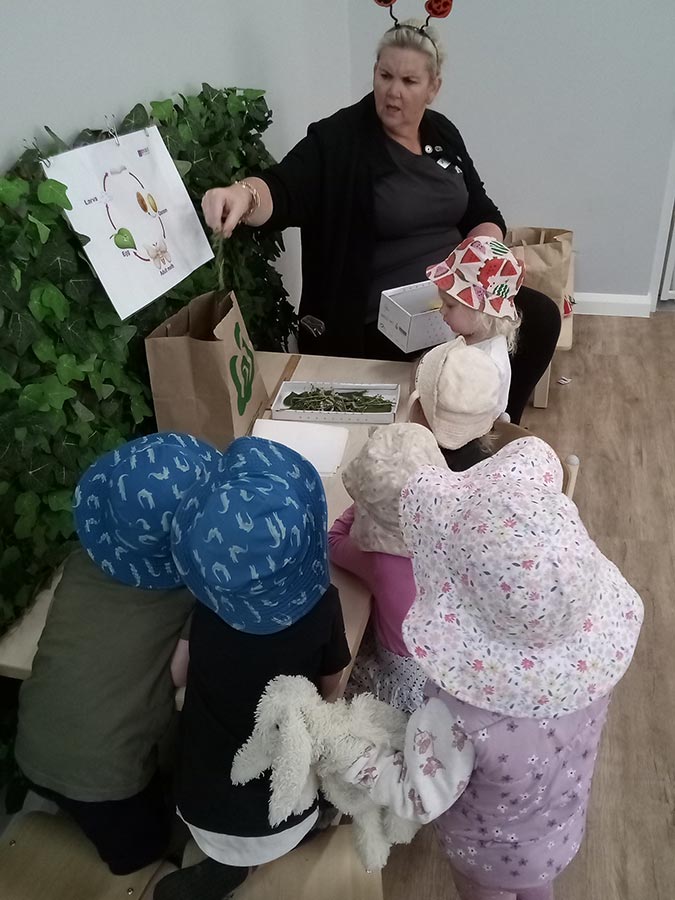The lifecycle of silkworms has come under the spotlight at Sonas Bayswater, with children monitoring the daily development of the fascinating creatures in the STEM studio.

Bayswater acquired its own collection of silkworms after a local mum, who is a primary school teacher, donated some of the worms for children to observe and explore.
Silkworms are tiny worms that spin their own silk cocoons, growing from small black worms to bigger white worms before making a cocoon and then emerging as a silk moth.
Raised to produce fabric for thousands of years, they live between July and September and feed on mulberry leaves, but are no longer found in the wild.
Bayswater Centre Manager Liz Clarke said the silkworms had been an opportunity for children to learn life skills through their interactions with living creatures; as well as how their love and care could help them grow and thrive.
“The silkworms provided an incredible learning opportunity for children in our STEM studio who followed their development over several weeks,” Liz said. “It prompted lots of inquisitive questions and research.”
Together, children and educators set up a living environment for the silkworms.
“The children observed the silkworms every day. They were able to see the growth of the worms and maintain the environment. Together with educators the children would clean it and provide fresh leaves for the silkworms.”
Liz said educators also curated activities around the silkworms, including counting how many they had and measuring the length of the worms, with the longest at 8cm.
“The children were able to observe the entire lifecycle of the silkworm from tiny little worms to great big worms and the children were then able to observe the process of the worms making cocoons and the many different stages of cocoons.
“When the moths came out of the cocoons there was lots of questions about whether they fly and what they eat so the children then used technology to explore interesting facts about silkworms.”
Once the moths laid eggs, some were retrieved and have been stored until the next cycle starts.
Photo Gallery




